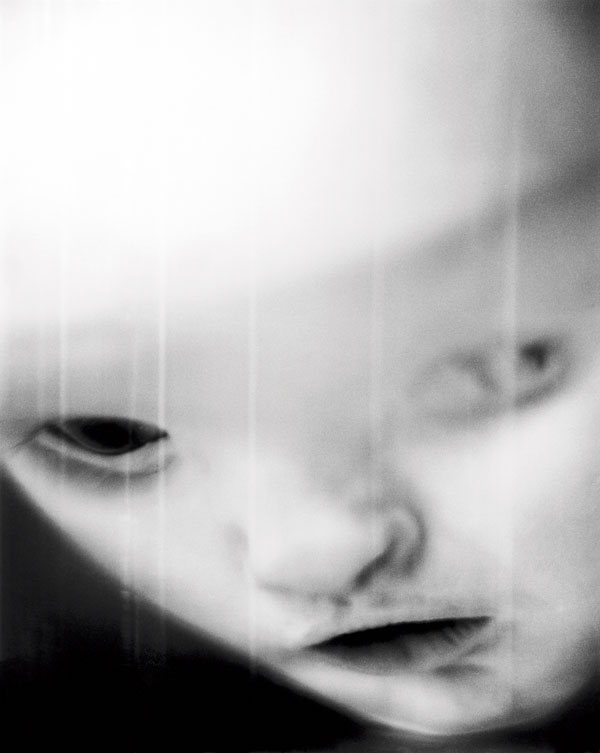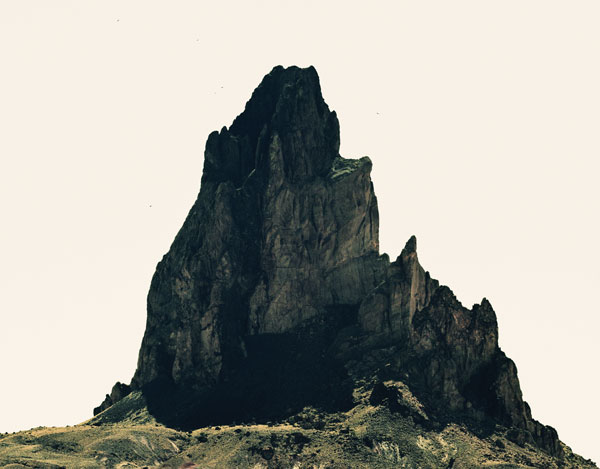[Winter 2011]
“Perspectives,” at the International Center of Photography in New York, is a new exhibition series focusing on emerging photographers and filmmakers. The inaugural presentation features the work of five young artists – Carol Bove, Lena Herzog, Matthew Porter, Ed Templeton, and Hong-An Truong – who employ various strategies in image-making that highlight the ever-apparent fact that the medium can take on any subject and show itself in a myriad of forms. The “perspective” taken by each photographer here seems less about a particular point of view or theoretical bias; rather, the title of the exhibition has to do with “perspective” as defined in the Oxford Dictionary: “The apparent relation between visible objects as to position, distance, etc.” Taking this meaning literally, there is distance indeed between these artists and their subject matter, as each one employs differing tactics of nostalgia, archival mining, and historical reference with varying degrees of success.
The first room contains the work of Hong-An Truong. Her multi-perspective video montage Adaptation Fever (2006–07) is made up of found black-and-white film footage from Indochina. Images are fragmented, cut off, and sometimes mirrored against one another. Viewers quickly become aware of the flatness of photography as images fold into themselves like filmic origami. Footage is sped up, and we only briefly glimpse prosaic scenes such as a young child reaching up to grasp the cross hanging around a priest’s neck. Other scenes include a boxing match, a burning car, a group of can-can dancers, and a street performer, sharply interjected against images of bombs and darkened skies. Journalistic film, meant to illuminate and educate, is rendered illustrative and stylish.
Truong’s work is a nostalgic look at French colonialism in Vietnam, and the memories are not directly her own but mediated through appropriated film images. Born in 1976, Truong reflects back on memories that she might have had – memories available only through images. Film footage and memory meld together; both have been easily appropriated and are effortlessly digestible as a concentric whole, and yet they are impossible to firmly locate.
The same can be said about the work of Carol Bove, whose installation of found objects, books, and images from the 1960s and 1970s demonstrates a fixation with a period before her time. C.H. (2010) is a wood-and-metal shelving unit on which an oil painting, various books and portfolios, shells, Swiss francs, seeds, a walnut, steel, and a feather are on view. Displaying publications by Freud, Yeats, Tao, and Lamatia – a veritable toolbox for modernism – this mid-century still life is a most unlikely candidate for a photography exhibition. Glancing from texts to documents and images is like trying to decipher a cryptogram, as though there were a mystery to be solved within these objects. It may be the artist’s intention to highlight the manner in which we digest and find meaning in images, offering an interesting variation on Barthes’s punctum.
Whereas Bove’s installation charts the cultural and intellectual renaissance of the mid-twentieth century, Lena Herzog’s work records the earlier period of New Science, when science became the new religion and understanding the world meant locating, mapping, and categorizing everything around us. Lost Souls is a series of enlarged black-and-white images of deformed fetuses and laboratory specimens from some of the first medical museums in Europe. This installation takes up the back room of the exhibition, with photographs dramatically lit against dark walls. The room is filled with an aura of reverence, remembrance, and sombre contemplation, a foil to the empirical and scientific study of the subject matter at hand. The trauma exuded by the subject matter is diluted by the medium.
Matthew Porter presents cinematically bright photographs in his portion of the exhibition. Dark Mountain (2009), an archival pigment print, looks like a film still from the 1960s – too saccharine and too perfect to be anything real. The image is actually delightfully banal to look at, as is Navigation Room (2009). Does this close-up of a series of cords and dials portray the mechanics of an important industrial machine ? The instrumental key to the annihilation of a city, an enemy, the world ? In fact, a small faceplate at the bottom of the lever translates from German to read, “that does absolutely nothing.”
While the first four artists seem to be looking back on periods before their time, Ed Templeton’s work is much more of the present. His 139 snapshots, many with titles written right on the photograph, resemble both traditional documentary work and acerbic pop advertising (it is telling that these two manners of photography so resemble each other). Images from Australia, Barcelona, New Hampshire, Paris, and Ohio expose a photographer constantly on the move, capturing images of suburban youth from around the world: overly sexualized, apathetic, and distracted. Themes of death and decay, hospitals and blood, are contrasted with concert scenes, backstage antics, and suburban skateboard parks. The montage of world travel makes us aware of this artist’s access to his subjects; perhaps it is the sheer number of different scenes and models that makes the project somehow disjointed and inauthentic, like shots captured by a tourist making his way around the world.
It is no longer photography’s role to make clear the unclear, and manipulation of the medium often renders things more ambiguous and puzzling. We viewers must look for clues in order to understand past events that we were not a part of or connect with an emotional place that is no longer accessible. The artists in “Perspectives” emphasize a deep apprehension toward the medium coupled with an incessant need to illustrate and document history in an effort to perpetuate its existence. It is precisely this tension that contributes to an exciting exhibition and leaves one with an eagerly anticipating the continued possibilities of visual representation.
Stephanie Gibson is a writer and art historian currently living in Toronto.



